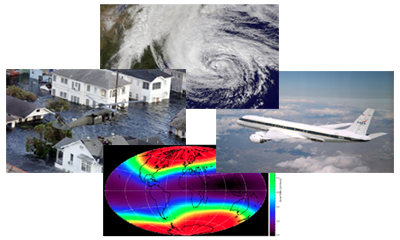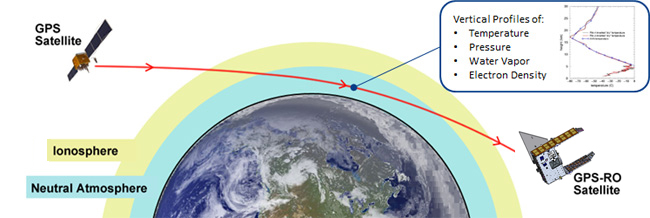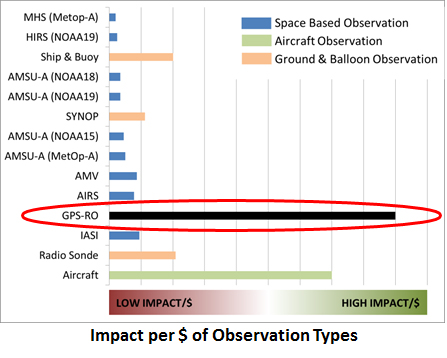What Are the Real-Life Impacts of GPS-RO?
Better weather forecasts  help people make better decisions that save lives, save money, protect buildings and critical infrastructure, and enhance quality of life. GPS-RO observations not only make routine weather forecasts more accurate, but also significantly improve predictions of natural disasters and other high-impact environmental events.
help people make better decisions that save lives, save money, protect buildings and critical infrastructure, and enhance quality of life. GPS-RO observations not only make routine weather forecasts more accurate, but also significantly improve predictions of natural disasters and other high-impact environmental events.
In the important area of hurricane prediction, for example, experiments show that GPS-RO can play a key role in achieving the U.S. National Oceanic and Atmospheric Administration (NOAA) goal of reducing average track and intensity errors by 50% in 10 years. Such improvements would allow public safety officials to act earlier and with more precision to evacuate and protect coastal areas.
GPS-RO has also shown the potential to improve regional forecasts for heavy precipitation from non-tropical storms, especially downwind of areas where traditional observations are scarce, enabling forecasters to better anticipate severe flooding and related impacts.
In addition, GPS-RO measurements support improved space weather forecasts important to numerous industries and our everyday way of life, which is increasingly dependent on technologies vulnerable to solar storms. Power grids, aviation systems, communications and navigation satellites, and military operations are all susceptible to the effects of space weather.



 help people make better decisions that save lives, save money, protect buildings and critical infrastructure, and enhance quality of life. GPS-RO observations not only make routine weather forecasts more accurate, but also significantly improve predictions of natural disasters and other high-impact environmental events.
help people make better decisions that save lives, save money, protect buildings and critical infrastructure, and enhance quality of life. GPS-RO observations not only make routine weather forecasts more accurate, but also significantly improve predictions of natural disasters and other high-impact environmental events.